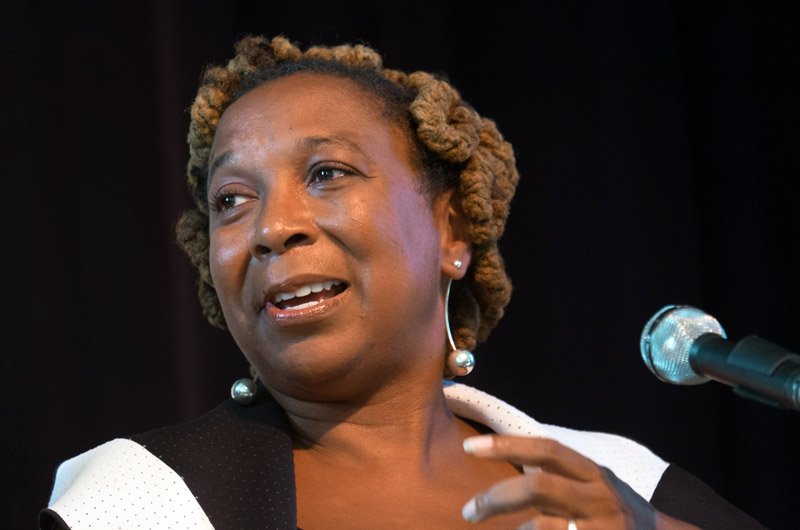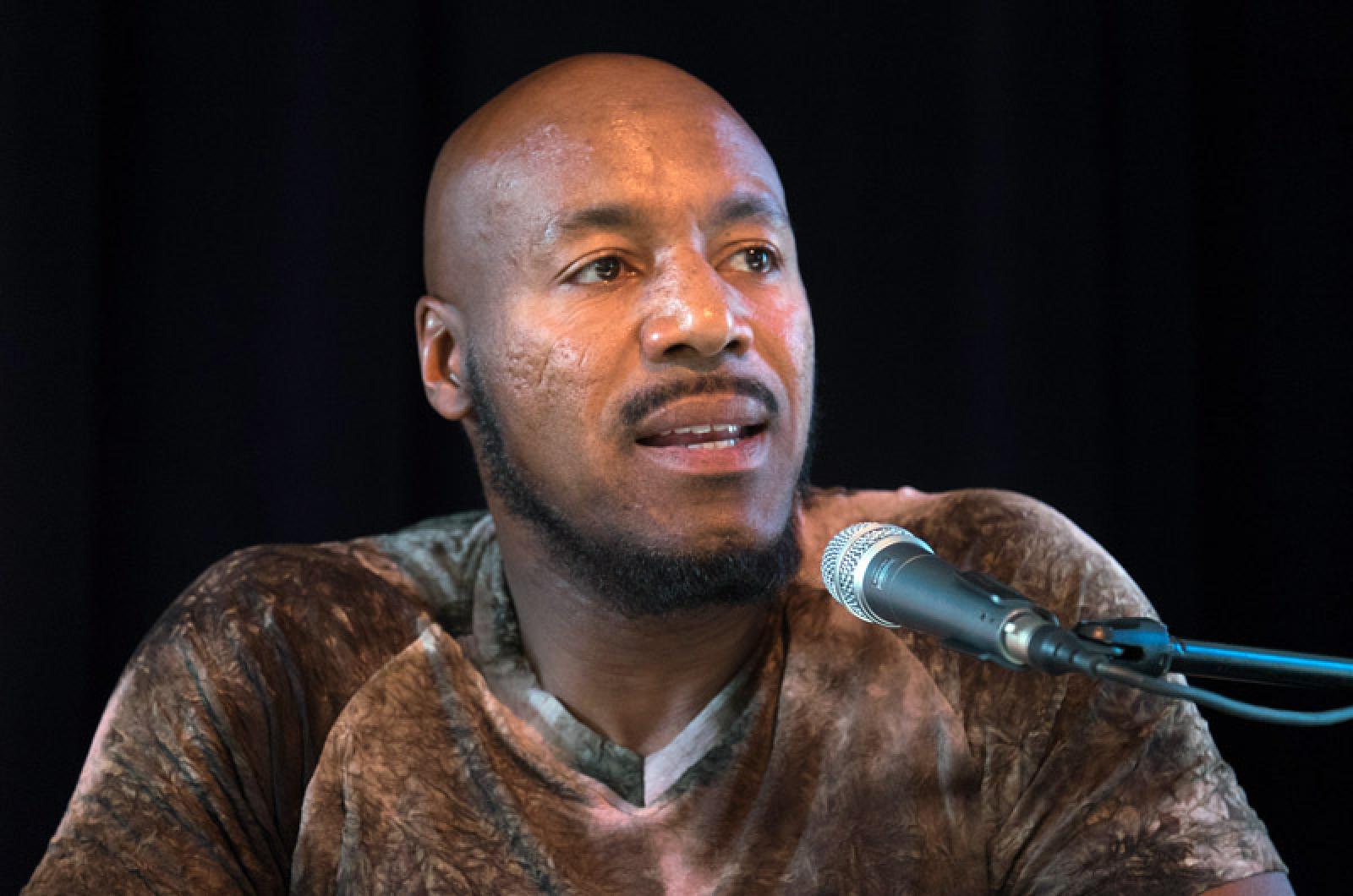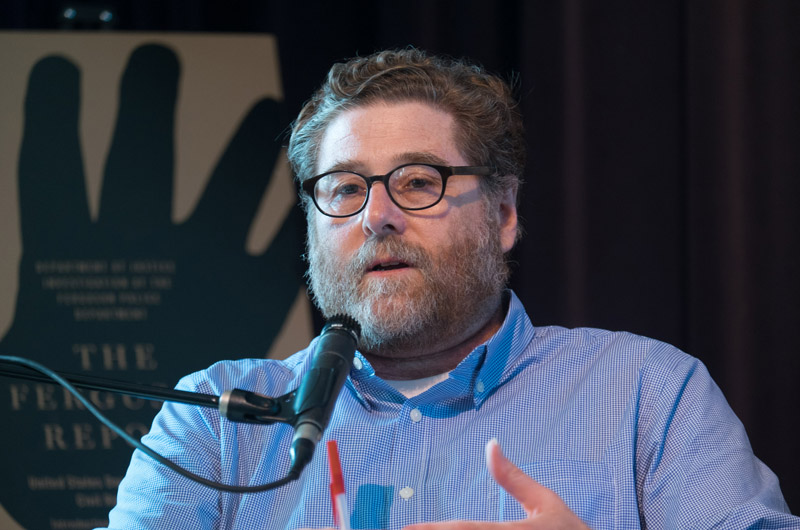Nearly a year to the day of Michael Brown’s killing in Ferguson, Mo., the New Press organized a panel discussion at the Katharine Cornell Theatre in honor of the publication of The Ferguson Report.
“It reminds me of why the Vineyard is such a special place when so many people will turn out for an event about justice on a hot summer evening,” said Marc Favreau, executive editor at the New Press, as he introduced the panel.
The speakers began with opening remarks that gave a sense of the situation thus far, primarily focusing on the systematic abuses of people of color in Ferguson that the report had revealed. Yet a primary point of note was that the abuses committed in Ferguson were by no means a localized occurrence.
“I’m sad to say Ferguson wasn’t a surprise,” said Jonathan Smith, who had worked with the Justice Department in writing the report. “Everything we saw in Ferguson, you saw in some form somewhere else in this country.”

The original impetus for the uptick in traffic stops came from a need to raise money without wanting to raise taxes, prompting the city of Ferguson to use the courts as a source of revenue. But abuses were already rampant. At one point, according to Mr. Smith, there were more warrants issued in Ferguson than there were citizens.
And the stops themselves were often petty and racially focused.
“They would consider it an offense if you hesitated to show ID,” said Mr. Smith. “And the entanglement of the court increased in turn.”
Thus, many citizens, primarily African American ones, were left confused and often in debt by the excessive number of fines issues by the city, sometimes at rates 10 times higher than those in neighboring areas. Yet the problem went beyond excessive ticketing.
“This was not a neutral system, by any means,” said Mr. Smith. “It did not affect everyone who lived in Ferguson equally.”
Whites were rarely under the same threat as blacks were in the city, and frequently used connections in city government to get out of paying tickets in ways black citizens frequently couldn’t. Mr. Smith described it as a “toxic situation” that was ripe for an incident like the shooting of Mr. Brown.
The other panelists continued to elaborate on how the Ferguson incident in many ways was a national story, emblematic of a nationwide problem of police violence and institutionalized racism.
“The system worked like it was supposed to,” said Paul Butler, a professor at Georgetown Law School. “The problem is not bad cops, the problem is bad policing.”
Mr. Butler questioned whether or not the Constitution actually even provided answers on issues like this, given that the Supreme Court has granted vast powers to police to stop and detain citizens despite the liberties afforded by the Bill of Rights.
He also cautioned against thinking of the system in the United States as normal or at all inevitable.
“Think about the numbers 800 and one,” he explained. “In a year in which police in the U.S. shot 800 people, police in the United Kingdom killed one.”
Kimberle Crenshaw, a professor at UCLA and Columbia School of Law, noted that racial dynamics are not the only forces at play, and gender also had a significant role. Ms. Crenshaw pointed out that, according to recent studies, masculine insecurity is typically a better measure of an officer’s likelihood to use excessive force than racial bias. She gave special attention to the relationship between women and the police, given the recent incidents involving altercations between black women and police officers that has given rise to the Say Her Name movement.
“They were seen as women in need of discipline and punishment,” Ms. Crenshaw said about how officers view these women. “And they see their job as order and control.”
When it came to looking towards the future of law enforcement and race relations, there were few opportunities for hope. But one area in which Mr. Smith did notice improvement was documentation, especially by ordinary citizens.
“I think the video camera on cell phones has made a tremendous difference,” said Mr. Smith. “Because then you could no longer deny watching someone being shot in the back as they’re running away.”
Still, many of the other panelists were wary of becoming too hopeful about such new technology, noting that the beating of Rodney King was similarly video taped, and that despite the graphic footage of Eric Garner dying in a choke hold, a grand jury still did not hand down an indictment.
“You know that old saying, who you going to believe, me or your lying eyes?” said Theodore Shaw, the moderator and professor of law at UNC Chapel Hill. “Well, we’ve seen it.”
While initially hesitant, the panelists offered slight indications that change might be on the rise, and were especially hopeful that the release of the Ferguson Report could be in turn used as a tool for communities across the nation to understand not only that abuse is occurring, but how they can recognize it and in turn oppose it.
“The hope is that we have young people marching in the streets,” said Mr. Smith.
“And it’s not just black young people,” Mr. Shaw added.









Comments
Comment policy »